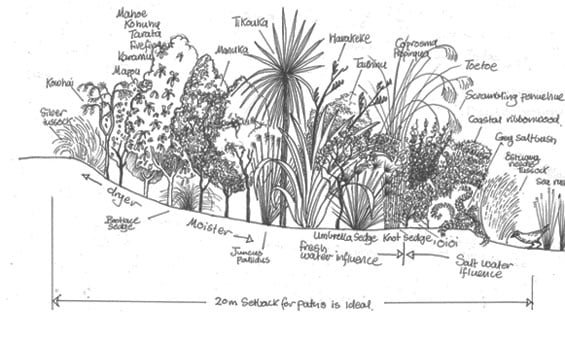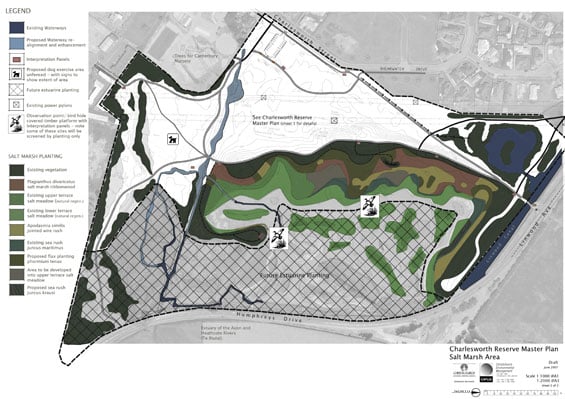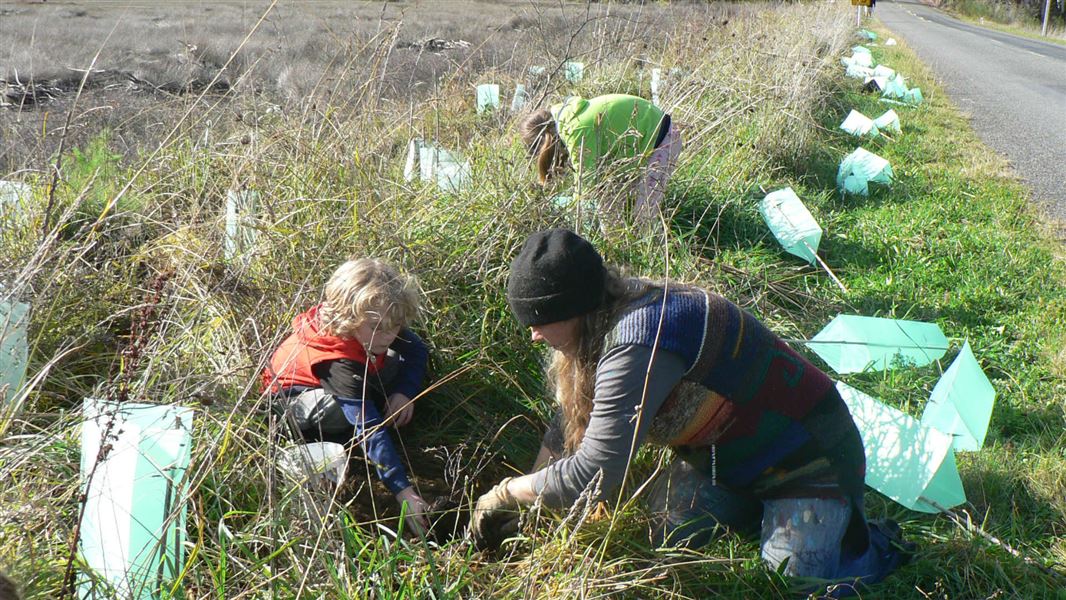Plants that live nearer to the mouth of the estuary are different to those further up where the water is fresh. At the sides of the estuary, rushes give way to larger plants like flax and eventually shrubs and trees.
It’s a dynamic place where streams and rivers often change course and storms and floods can scour out a large area. Human activities (like sediment from upstream) can affect the area too.
Variations in New Zealand
Estuary plants also vary around New Zealand. The best-known example is the sub-tropical mangrove, which doesn’t grow south of Bay of Plenty and Kawhia Harbour because of the cooler climate. Plant species also vary with the land and land use, so two nearby estuaries may contain quite different plants.
Climate change
Climate change is causing the sea around New Zealand to rise, so estuaries are slowly moving inland and changing shape. Plants will follow that movement, with the salt tolerant species establishing further inland. Climate change also brings more intense storms and therefore more disturbance to estuaries.
Replanting
Restoration work in an estuary involves replanting with eco-sourced plants that would have originally been found at that site. This work is challenging because:
- the plants will probably have to be grown from seed taken from those in the same locality
- some plants are likely to be washed away in storms and floods
- estuary plants grow and spread slowly.
The goal is to establish viable populations of hardy species that can recover after disturbance.
Planning is essential
Because restoration planting in estuaries is a long-term project, we recommend making a detailed plan before you start. The plan should include a review of what plants are there today, how you will source plants, where the most salt tolerant species (low stature rushes and meadow herbs) could migrate to as sea level rises and any funding requirements.
The input of an ecologist or botanist would probably be helpful to identify and suggest plants to grow for your estuary.
Plant lists
We have collected a range of plant lists from estuaries around the country. There are two types of list:
- inventory: a record of the plants found at a site on a certain date
- restoration guide: advice about what to plant in a particular estuary.
All the plant lists are presented on the restoration map, they are also downloadable in this planting lists table (XLSX, 23K).
Inventories
A plant inventory records all the plants observed on a visit. The list may include desirable native plants, species planted in error and exotic weeds (that are often reported with an asterisk).
As the inventory is a record at a certain time, it could be decades old and the vegetation may have changed considerably in that time due to land use change, sedimentation and weed spread. Plant names may also have changed - check on the New Zealand Plant Conservation Network.
Inventories can be used to create a restoration list, but a knowledge of estuarine plants and their habitat is needed. We recommend getting advice from your regional council. Bioblitzes are a great way for people to get together to find out what’s there - see iNaturalist NZ – Mātaki Taiao.
Restoration guide
A restoration guide usually includes a list of plants that are appropriate for a site and its specific habitats. It may also give advice on where to get the right plants, and those that will establish naturally.
Examples and resources
- Coastal planting guides, Auckland Council
- Local planting guides, Department of Conservation
- Preparing a restoration plan, NatureSpace
- Tasman estuaries native plant restoration list, Tasman District Council
- Documentary describing plants in Pāuatahanui estuary, Living Waters

Waimea Inlet - sketch of ideal estuarine margin vegetation sequence. View larger image (JPG, 76K) | Image: Roger Gaskell, DOC

Charlesworth Reserve - shows planting layout for specific key species such as Juncus krausii (sea rush) and Apodasmia similis (oioi, jointed wire rush) (Christchurch City Council). View larger image (JPG, 345K)
Contacts
Before you get started on an estuary planting project, we recommended talking to your local regional council about your plans and seeking their advice. See the Regional council contact list (PDF, 78K)
Before and after restoration images
Use a modern browser such as Chrome or Safari to view the images below.
Setting up photo points to show the success of your restoration is a powerful way to communicate the results of your efforts. If taken from exactly the same position, tools like Juxtapose can be used to easily generate sliders like the one below.
